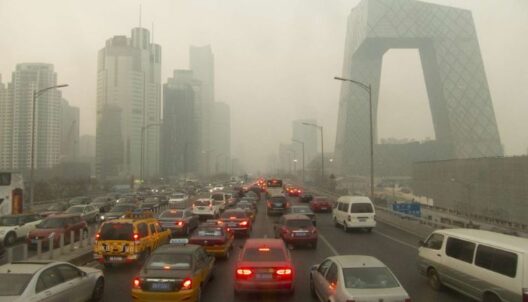Tokyo, a sprawling metropolis pulsating with life, exists under a vast and ever-changing canopy of sky. The climate of this renowned Asian megacity serves as both an enchanting backdrop and a significant challenge to its residents. With its distinct seasons and increasing variability driven by climate change, Tokyo embodies the juxtaposition of urban vibrancy against the stark reality of environmental evolution. To comprehend the intricate climate of Tokyo, one must navigate through its nuances, from the seasonal transformations that dictate daily life to the broader implications of global warming that loom over this bustling city.
Tokyo is situated in a humid subtropical climate zone, characterized by hot summers and mild winters. The seasons of Tokyo are like chapters in a novel, each narrating a distinct atmosphere—the warmth of summer, the golden hues of autumn, the chill of winter, and the vibrant blooms of spring. Summer, from June to August, unveils an opulent tapestry of warmth, with temperatures frequently soaring above 30°C (86°F). The oppressive humidity often envelops the city, turning the air into a heavy cloak that clings to the skin. This palpable summer heat is punctuated by the ‘tsuyu,’ or the rainy season, which showers the city with persistent downpours, transforming the asphalt landscapes into glistening reflections.
Autumn brings a subtle metamorphosis, a season where the city exudes a kaleidoscope of colors. The once-green foliage morphs into brilliant shades of crimson and gold, casting a spell of serenity over the urban frenzy. The cooler air caresses the faces of Tokyoites, inviting them to explore parks, streets, and cafes, reveling in the ephemeral beauty before winter’s clasp. As the first frost descends upon the city in December, it marks the transition to winter. The clouds often obscure the sun, shrouding the city in a monochrome embrace. Nevertheless, this season’s stillness is frequently buoyed by festive cheer, as illuminations adorn the skyline like stars fallen from the nocturnal heavens.
Winter in Tokyo can be deceptively mild compared to other regions of Japan. Snowfall is rare, yet when it does occur, it transforms the urban landscape into a breathtaking winter wonderland, if only for a fleeting moment. The average temperature hovers around 5°C (41°F), compelling residents to don warmer attire while artfully navigating through the bustling streets. As winter slowly cedes to spring, Tokyo is punctuated by the arrival of hanami, or cherry blossom season. The delicate sakura trees bloom in soft pastel pinks and whites, transforming parks into enchanting realms of ephemeral beauty. This spectacle attracts thousands, as locals and tourists alike gather beneath the flowering boughs to celebrate the arrival of warmer days.
However, the climate of Tokyo is not merely a sequence of seasonal prose; it is increasingly beset by the stark realities of climate change. Rising global temperatures are felt acutely within the urban fabric of Tokyo, evidenced by more frequent heatwaves and erratic precipitation patterns. These climatic shifts present formidable challenges. The risk of flooding has escalated, exacerbated by heavy rainfall events that lead to overflowing rivers and inundated streets. As Tokyo’s infrastructure grapples with changing rainfall intensities, urban planners are compelled to innovate adaptive responses.
Moreover, as temperatures rise, public health concerns surrounding extreme heat become pervasive. Vulnerable populations, including the elderly and those with pre-existing health conditions, face heightened risks during heatwaves. It is imperative for Tokyo to adopt holistic strategies that encompass heat mitigation. Initiatives such as urban greening, rooftop gardens, and reflective pavements could serve as practical solutions to combat the urban heat island effect while enhancing the quality of life in the city.
The cultural vibrancy of Tokyo intertwines with its climate, as the city emerges as a hub for environmental consciousness and action. Institutions and grassroots movements are galvanizing efforts to advocate for sustainable practices. The proliferation of eco-friendly policies aims to bolster resiliency against climate adversity while nurturing a deeper appreciation for the environment. Tokyoites are increasingly rallying around efforts to reduce waste, promote renewable energy, and engage in sustainable urban initiatives.
In the midst of such complexities, Tokyo continues to thrive, embodying the resilience of a city that navigates the challenges posed by a changing climate. The people of Tokyo, much like the sakura blossoms that grace their parks, possess an innate capacity to adapt and flourish against the odds. The changing skies above this vibrant metropolis narrate a story of transformation—not only as a reflection of climatic shifts but as a metaphor for the evolving ethos of its residents.
As dusk descends upon Tokyo, the skyline radiates with the luminescent glow of lights, signifying an indomitable spirit that embraces both innovation and tradition. The climate, an intrinsic character in the unfolding narrative of the city, continually shapes its identity. Each season, every rainfall, and the mercurial nature of temperature shifts serve as reminders of the profound interconnectedness between urban life and the environment. In essence, the climate of Tokyo is not merely a matter of meteorological conditions; it is a living chronicle of adaptation, creativity, and a collective response to the clarion call of climate change.
In conclusion, as we peer into the future, the climate of Tokyo invites a mixture of respect and responsibility. With its captivating aesthetic appeal and the pressing reality of environmental change, Tokyo stands at a pivotal crossroads. The time has arrived for ambitious action, fostering a harmonious existence between urban development and ecological sustainability. The skies over Tokyo, once tinged with uncertainty, now shimmer with the potential for change and hope, illuminating a path forward that intertwines with the legacy of this magnificent city.






